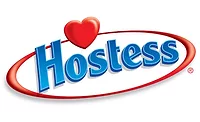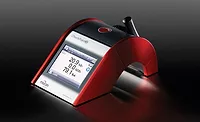A raspberry for excess headspace
The January edition of Consumer Reports magazine takes aim at food packages that seem to promise more than they deliver, with Lay’s potato chips cited as exhibit A.

Consumer Reports
The publication took a critical look at containers that its readers felt contain excessive “slack fill,” defined as nonfunctional or empty space that creates the illusion of more product than the package contains. The federal Fair Packaging and Labeling Act prohibits excessive, nonfunctional slack fill, though no FDA enforcement has occurred in at least five years.
“Packaging gets enormous readership,” according to Todd Marks, who wrote the story, “Air to Spare.” “When our readers think they’re getting snookered, they write in to us.” Frito-Lay’s snacks are not an egregious example of half-filled bags of potato chips, just an example recommended by readers, he adds.
FDA defined permissible uses of slack fill in 1994, as a follow-up to the Nutrition Labeling and Education Act. According to Chicago attorney Eric Greenberg, exemptions to the misleading-container provisions are found in section 100.100 of Title 21 in the Code of Federal Regulations and include:
• product settling during shipping and handling
• containers with a secondary use
• minimum size needed for labeling, tamper-evident devices or pilferage prevention
• product protection
• package machinery requirements.
Some of the hold-harmless exemptions were cited by Frito-Lay customer service representatives when Marks “called as a consumer.” Left unsaid was that the bag is filled with nitrogen, not simply air, to retard rancidity caused by oxidation of the chips’ oil.

Nitrogen has a functional role in oily products like potato chips, but the message was lost in “black hole” awards lampooning bags of Lay’s chips.
Consumer Reports
The publication took a critical look at containers that its readers felt contain excessive “slack fill,” defined as nonfunctional or empty space that creates the illusion of more product than the package contains. The federal Fair Packaging and Labeling Act prohibits excessive, nonfunctional slack fill, though no FDA enforcement has occurred in at least five years.
“Packaging gets enormous readership,” according to Todd Marks, who wrote the story, “Air to Spare.” “When our readers think they’re getting snookered, they write in to us.” Frito-Lay’s snacks are not an egregious example of half-filled bags of potato chips, just an example recommended by readers, he adds.
FDA defined permissible uses of slack fill in 1994, as a follow-up to the Nutrition Labeling and Education Act. According to Chicago attorney Eric Greenberg, exemptions to the misleading-container provisions are found in section 100.100 of Title 21 in the Code of Federal Regulations and include:
• product settling during shipping and handling
• containers with a secondary use
• minimum size needed for labeling, tamper-evident devices or pilferage prevention
• product protection
• package machinery requirements.
Some of the hold-harmless exemptions were cited by Frito-Lay customer service representatives when Marks “called as a consumer.” Left unsaid was that the bag is filled with nitrogen, not simply air, to retard rancidity caused by oxidation of the chips’ oil.
Looking for a reprint of this article?
From high-res PDFs to custom plaques, order your copy today!






